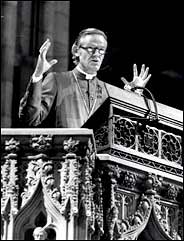ART WARS
The Rhetoric of Power:
A meditation for Mental Health Month
From “Secondary Structures,” by Tom Moody, Sculpture Magazine, June 2000:
“By the early ’90s, the perception of Minimalism as a ‘pure’ art untouched by history lay in tatters. The coup de grâce against the movement came not from an artwork, however, but from a text. Shortly after the removal of Richard Serra’s Tilted Arc from New York City’s Federal Plaza, Harvard art historian Anna Chave published ‘Minimalism and the Rhetoric of Power’ (Arts Magazine, January 1990), a rousing attack on the boys’ club that stops just short of a full-blown ad hominem rant. Analyzing artworks (Walter de Maria’s aluminum swastika, Morris’s ‘carceral images,’ Flavin’s phallic ‘hot rods’), critical vocabulary (Morris’s use of ‘intimacy’ as a negative, Judd’s incantatory use of the word ‘powerful’), even titles (Frank Stella’s National Socialist-tinged Arbeit Macht Frei and Reichstag), Chave highlights the disturbing undercurrents of hypermasculinity and social control beneath Minimalism’s bland exterior. Seeing it through the eyes of the ordinary viewer, she concludes that ‘what [most] disturbs [the public at large] about Minimalist art may be what disturbs them about their own lives and times, as the face it projects is society’s blankest, steeliest face; the impersonal face of technology, industry and commerce; the unyielding face of the father: a face that is usually far more attractively masked.’ ”
From Maureen Dowd’s New York Times column of June 9, 2002:
“The shape of the government is not as important as the policy of the government. If he makes the policy aggressive and pre-emptive, the president can conduct the war on terror from the National Gallery of Art.”
|
From the New York Times, The National Gallery of Art in Washington has just acquired Tony Smith’s first steel sculpture: “Die,” created in 1962 and fabricated in 1968. “It’s a seminal icon of postwar American art,” said Earl A. Powell III, director of the National Gallery. |
|
|
Die (Tony Smith) |
|
|
Bishop Moore |
|
From a New York Times obituary, Bishop Dies Paul Moore Jr., the retired Episcopal bishop of New York who for more than a decade was the most formidable liberal Christian voice in the city, died yesterday at home in Greenwich Village. He was 83…. Bishop Moore argued for his agenda in the most Christian of terms, refusing to cede Biblical language to the Christian right. Although he retired as bishop in 1989, he continued to speak out, taking to the pulpit of his former church as recently as March 24, even as illness overtook him, to protest the war in Iraq. “It appears we have two types of religion here,” the bishop said, aiming his sharpest barbs at President Bush. “One is a solitary Texas politician who says, `I talk to Jesus, and I am right.’ The other involves millions of people of all faiths who disagree.” He added: “I think it is terrifying. I believe it will lead to a terrible crack in the whole culture as we have come to know it.”…. [In reference to another question] Bishop Moore later acknowledged that his rhetoric was strong, but added, “In this city you have to speak strongly to be heard.” Paul Moore’s early life does not immediately suggest an affinity for the kinds of social issues that he would later champion…. His grandfather was one of the founders of Bankers Trust. His father was a good friend of Senator Prescott Bush, whose son, George H. W. Bush, and grandson, George W. Bush, would become United States presidents. |
Related material (update of May 12, 2003):
Question:
Which of the two theories of truth in reading (2) above is exemplified by Moore’s March 24 remarks?

